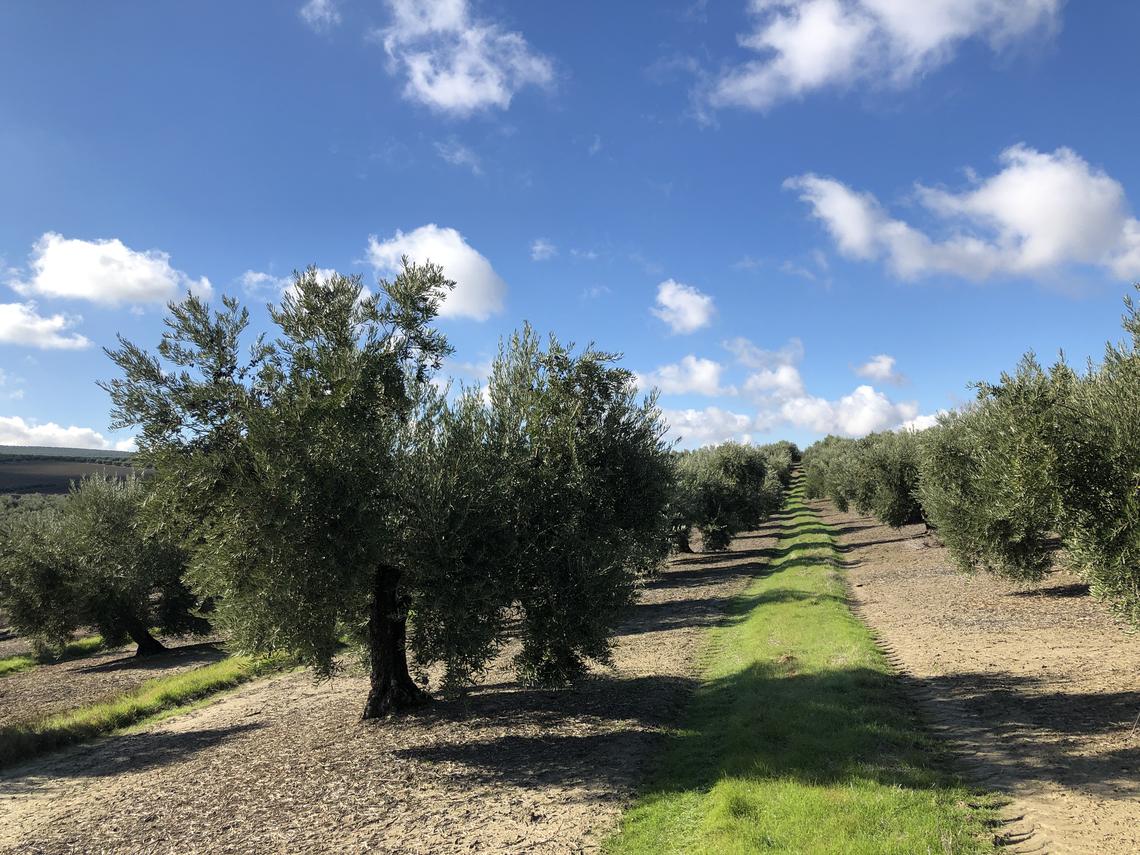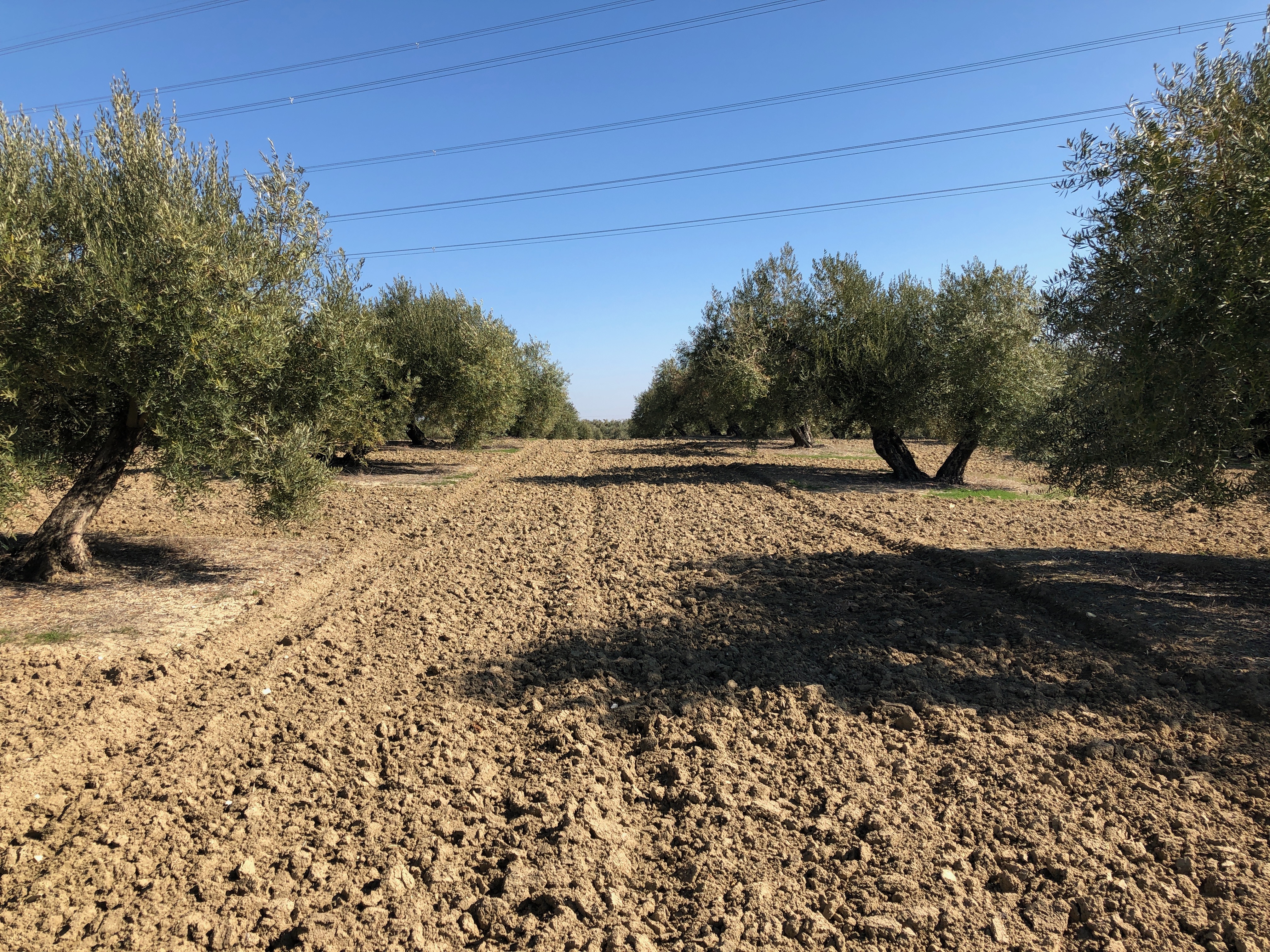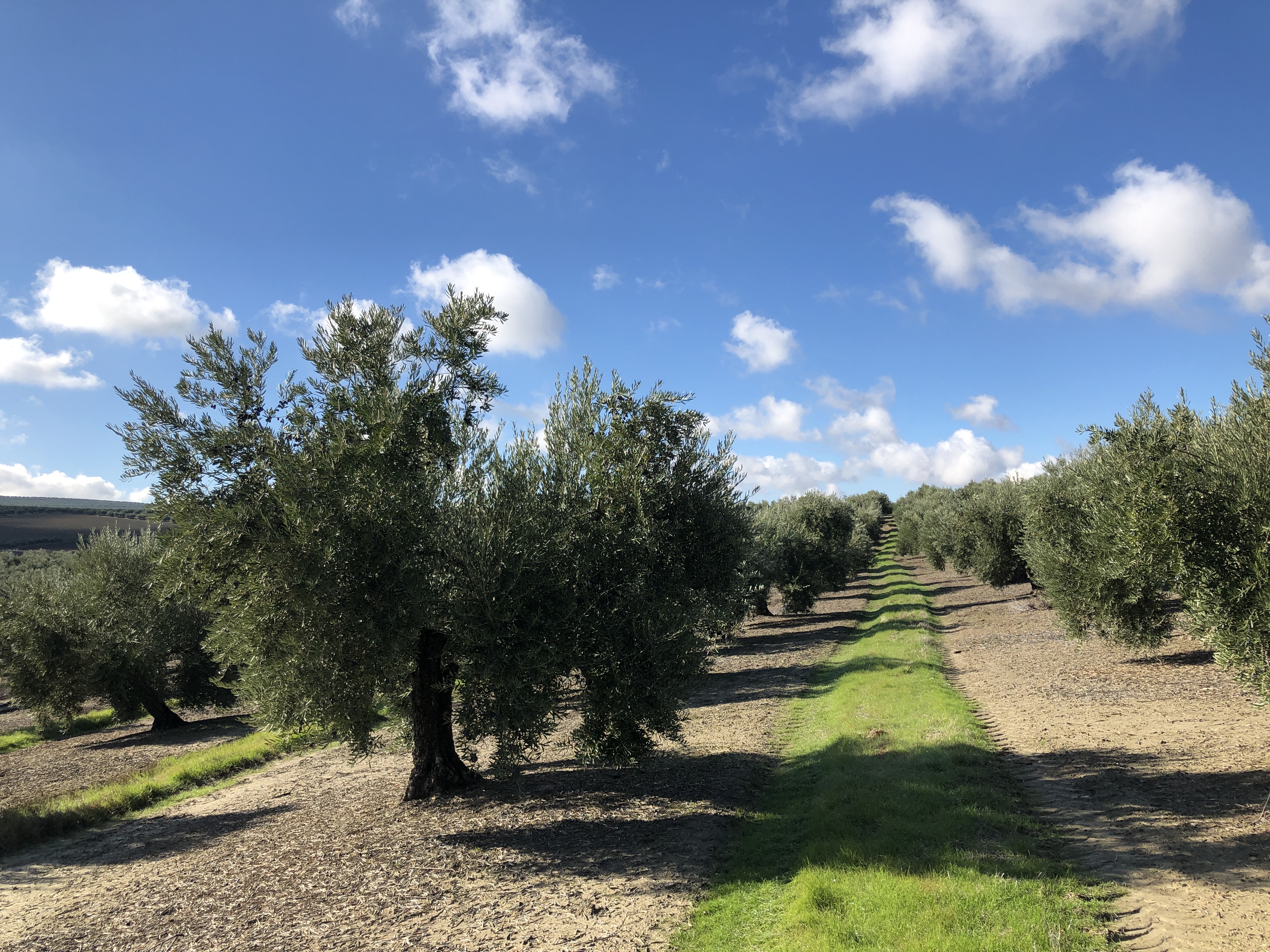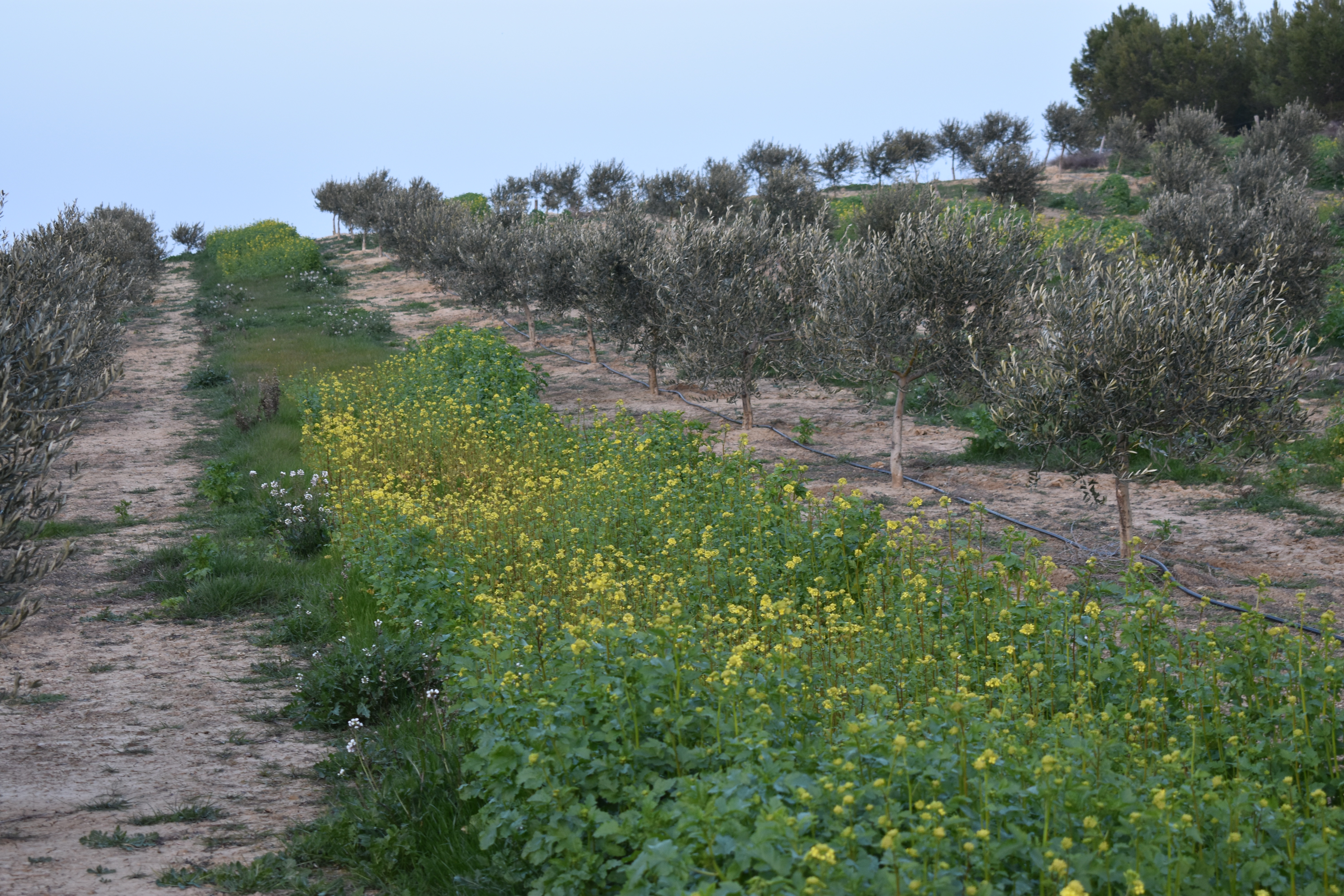IWM in Spanish olive orchards
Posted on October 22nd, 2021 on 11:25:47 by Veronica PEDRAZA JIMENEZ

This blog presents an overview of integrated weed management issues in Spanish olive orchards based on experiences from the European project IWMPRAISE.
The olive (Olea europaea L.) is one of the most important perennial woody crop plants, occupying over 10 million hectares worldwide. In addition, these woody fruit trees play a very important role in the Mediterranean Basin economy and most of the global production comes from Southern Europe. In fact, Spain is the country with the largest olive growing area in the world with 2.6 million hectares, an authentic 'sea of olive trees'. Given the broad geographical area that olive orchards cover within the country, soil and weed management decisions are significantly influenced by location, climatic conditions, soil, topography and grower preferences. In all of them, soil management techniques aim to promote high profitability and quality production, being essential a proper weed control to prevent them from competing with olive trees for water, light, rooting space and other mineral resources.
Farmers typically manage weeds through repeated tillage and/or herbicide application. However, the combination of a Mediterranean-type climate, sloping areas and management practices with scarce herbaceous vegetation cover have led to severe problems of water availability and soil erosion. Moreover, we are facing a growing problem of herbicide resistance, the expectation that many of the currently used herbicides will be withdrawn from the European market accompanied by the negative effects of herbicides on farmland biodiversity. They can cause the loss of important ecosystem services such as food supply for pollination or the reduction of fauna habitats that help prevent pests and diseases.

In this context, there is now a greater need than ever to combine crop production with the protection of the agroecosystem and the conservation of the soil's productive potential. The European Union, within the framework of the EU Horizon 2020 program, has highlighted the role of integrated weed management techniques through the IWMPRAISE project "Integrated Weed Management: PRActical Implementation and Solutions for Europe" (https://iwmpraise.eu/). Its main objective is to develop, evaluate and validate more sustainable integrated weed management strategies, without jeopardizing profitability or the steady supply of food, feed and biomaterials in the most representative crops in Europe, being one of them the olive orchards. With a duration of five years (2017-2022) and the participation of 38 partners in eight European countries (Denmark, the Netherlands, the United Kingdom, France, Switzerland, Slovenia, Italy and Spain), this work is being developed at the national level by the Institute for Sustainable Agriculture from Córdoba, a center of the Spanish National Research Council (IAS-CSIC) and the Navarre Institute of Transfer and Innovation in Agri-food sector (INTIA).
In an attempt to use alternative approaches to control weed flora, some integrated weed management strategies have been established in order to improve the soil conservation practices carried out by farmers. Therefore, reduced tillage and no-tillage are commonly used combining cultural, mechanical, biological and chemical practices during the growing season, since most of the olive orchards in Spain have two clearly distinctive areas: the bare soil beneath the olive trees, where it is crucial to facilitate harvesting, and the area along the lanes (intra-row and interrow spacing), with higher susceptibility to compaction, runoff and erosion. In this latter area, farmers manage to reduce the use of herbicides with the adoption of covered soil techniques keeping at least 30% of this area covered.

This coverage is generally achieved by establishing living cover crops composed of spontaneous flora or sown species, incorporating plant residues mulches generated after harvesting or all of them together. The most commonly used are spontaneous cover crops consisting of natural grasses or crucifers, cultivated cover crops composed of cruciferous, leguminous or grass species and inert covers with olive leaves and pruning wood residues. These practices can help not only to reduce dependence on the use of herbicides, but also to protect the soil from erosion, improve its structure and long-term fertility.

A 2-year study with reduced tillage and spontaneous grass cover crops (Bromus spp.) in southern Spain in addition to no-tillage and sown crucifer cover crops (Sinapis alba) in northern Spain showed that the management system has an effect on the weed community. Preliminary results showed a greater abundance in the no-tillage intra-rows than with tillage operations, as well as higher diversity and equity of weeds in spontaneous grass cover crops inter-rows. In contrast, no-tillage did not show a significantly lower abundance than cover cropping and the biodiversity indices were very similar in northern Spain. However, there was no effect of the integrated weed management strategy on yield or quality results at any location and an improvement in soil fertility of cover crops fields was observed (for more information, please click here).
Further investigation will confirm the results obtained and will help to understand the factors influencing the emergence and proliferation of species, being crucial in improving the weed control efficacy, reducing the use of herbicides, moderating the intensity of soil operations, and favoring the implementation of cover crops in the long term.
2554 x viewed | 49 Likes -
Message to the author
Filter by theme
Filter by Working Group
How can I submit a post?
We would like to welcome you as a contributing author for the EWRS blog. Please contact the Communication Officer, Camilla Moonen. She can give you writing access to the blog. After that, you can start writing articles for the blog, from the 'My Account page'. More information can be found on the "How to use the Blog page".
